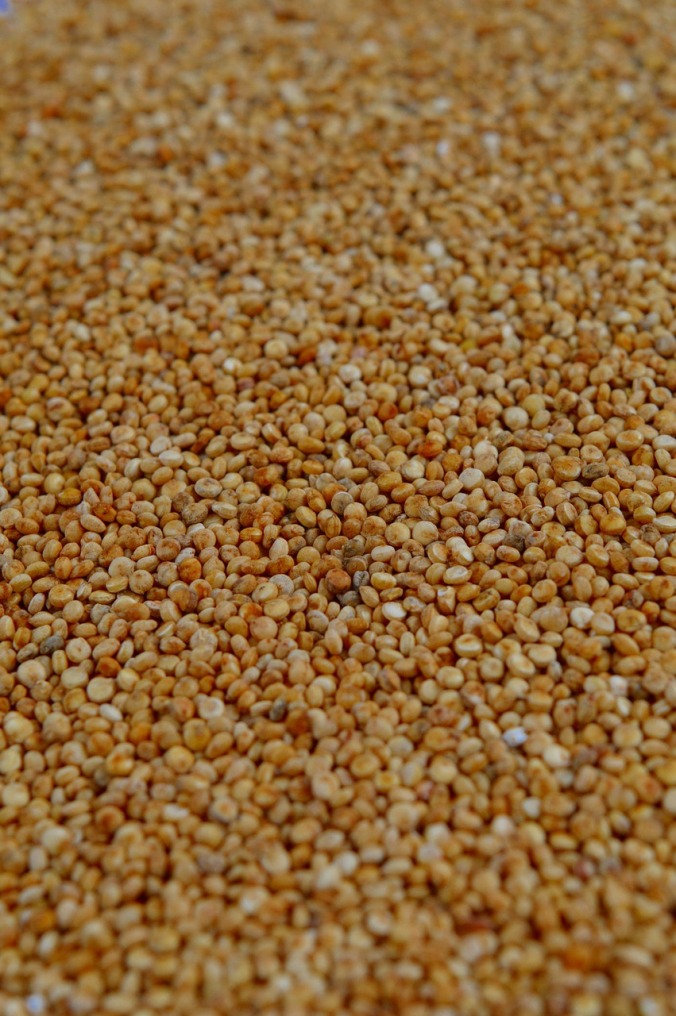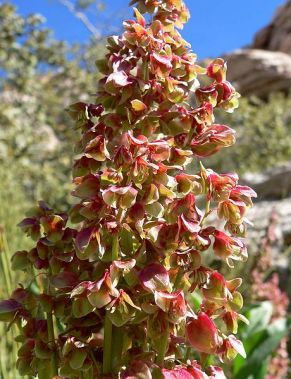Jacqueline here with a confession. I confess I am not a fussy gardener. I prefer plants that I can plant and forget about until harvest time. Likewise, in the kitchen, I prefer foods that are easy to prepare, needing few steps to provide a satisfying meal. Lucky for me the Sonoran Desert abounds in such plants, and amaranth is just one of them – great in both the garden and kitchen.

There are over 60 species of amaranth, and while several species are considered weeds, many people around the world value amaranths as vegetables, for the seeds, for dye, and as ornamentals. Amaranth grows best in the heat of summer, and it is not too late to plant some.
Some species of amaranth are eaten as greens – and are anything but green! Foliage ranges in hue from crimson, to red, to vivid magenta, all due to natural pigments called betalains. Whatever their color, they are a very good source of vitamins including vitamin A, B3, B6, C, vitamin K, and folate, along with dietary minerals calcium, iron, magnesium, phosphorus, potassium, zinc, copper, and especially manganese.

The root of mature amaranth is a palatable parsnip-like vegetable. It is fine added to stews or cooked and mashed.
Amaranth seeds, like quinoa, teff, and buckwheat, contain “complete protein” (a complete set of the amino acids needed by humans). These examples are called “pseudograins” because of their flavor and cooking is similar to grains, but unlike grain, they do not contain gluten. (By the way, “true” grains are in the grass family.) As with rice and other grains, use two cups liquid to one cup seeds.

Amaranth is related to quinoa.
Amaranth greens and seed are used as a tonic in Chinese medicine for their richness in minerals and vitamins – to help the body recover from a variety of ills, including infections, rashes, and migraines.
In India, amaranth is recommended for people with low red blood cell count. Several studies have shown that amaranth seed and amaranth seed oil may be of benefit for those with hypertension and cardiovascular disease; regular consumption reduces blood pressure and cholesterol levels, while improving antioxidant status and some immune parameters.

Young amaranth leaves are tasty right off the plant, in salads, or they can be steamed as a potherb. In Greece, their native green amaranth (Amaranthus viridis) is used in a popular dish called “vleeta.” Leaves are boiled, then served with olive oil and lemon, usually alongside fried fish.
Amaranth grows very rapidly and their large seed heads can weigh several pounds and contain a half-million seeds. Mature seed heads of amaranth are ideally harvested while still somewhat green, before the bracts open to release the seed. Thus seed will drop where you can more easily capture it, like within a paper bag.
These seeds can be boiled, parched or even toasted much like popcorn and mixed with honey, molasses or chocolate to make a Mexican treat called alegría, which will have to be a topic for the future, or see the chapter Using Father Kino’s Herbs for a recipe.

A quick dinner when you don’t want to heat the kitchen too much is steamed amaranth greens and scrambled eggs.
![]() Want to learn more about growing amaranth? Look for my free lectures at your local Pima County Library branch, Tubac Presidio, Tucson Festival of Books and other venues. After each event I will sell and sign copies of my books, including Southwest Fruit and Vegetable Gardening (Cool Springs Press, $23).
Want to learn more about growing amaranth? Look for my free lectures at your local Pima County Library branch, Tubac Presidio, Tucson Festival of Books and other venues. After each event I will sell and sign copies of my books, including Southwest Fruit and Vegetable Gardening (Cool Springs Press, $23).
© Article copyright by Jacqueline A. Soule. All rights reserved. Republishing an entire blog post or article is prohibited without permission. I receive many requests to reprint my work. My policy is that you may use a short excerpt but you must give proper credit to the author, and must include a link back to the original post on our site. Photos © Jacqueline A. Soule where marked and they may not be used.





















































